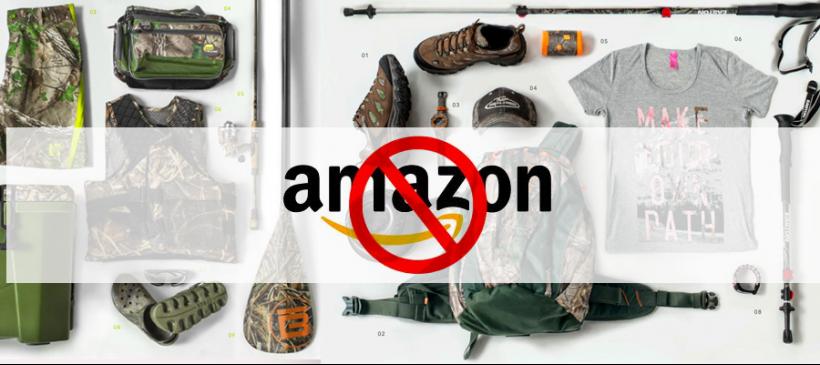10 Reasons Not To Sell Your Products on Amazon
- April 2, 2018
- By Todd Whitesel
- Marketing

Recently we looked at 10 reasons why you should be selling on Amazon. After all, it's the world's largest ecommerce retail site with millions of active shoppers using the site daily for product research and purchases. But there are also pitfalls to consider when selling on Amazon. Here are 10 reasons not to sell on Amazon.
1. Amazon sellers only get paid every 14 days. Unlike selling on ebay and other ecommerce sites, where payments are generally instant, Amazon pays sellers every two weeks. And then, it can take 3 to 5 business days for funds to appear in your bank account. These delays can make it difficult to ramp up inventory when you're waiting for money.
2. It can be very complex. From selling, fulfillment and storage fees to winning the Buy Box and dealing with duplicate listings from competitors, selling on Amazon can be a time-consuming and circuitous process.
3. Competition is fierce. There are over 2 million third-party sellers on the Amazon marketplace, and you could be competing for sales with resellers with more buying power along with those offering your product or a similar one at a lower price.
4. The race for the sale can kill margins. Often many resellers offer the same products on Amazon creating a crowded and very price-competitive field where getting the sale can greatly reduce net revenues.
5. Selling fees can add up quickly. Along with the $39.99 monthly fee associated with a Professional Seller account, Amazon charges referral fees based on product category along with fulfillment fees for FBA sellers. For example, if you are selling a large dome camping tent for $130 using FBA, you would incur $35.80 in Amazon fees. These include a $19.50 referral fee for the sale along with approximately $16.30 in Fulfillment by Amazon fees. These fees don't include the shipping fees paid to mail the tent to an Amazon fulfillment center.
6. Products returned from customers may not be damage and not in condition to sell again as new condition products. Be prepared to take a loss with some new inventory.
7. Redundant delivery increases carbon footprint. Sellers using Amazon's FBA service must first ship their products to an Amazon fulfillment center. There, the product is stored until a customer buys it. Then, it is shipped to the customer from Amazon. Thus, every product sold through FBA must be shipped twice before it ever reaches the customer. This leads to a double demand on labor, transportation and packaging for every sale.
8. Amazon is always in control. The company can revoke selling privileges at any time. A seller who goes “all in” on Amazon should consider other venues for products in case his or her account is revoked for any reason.
9. Delivering personalized service is nearly impossible. Although it may be your item that got the sale, Amazon severely limits how sellers can communicate with customers. Your product and/or brand can quickly dissolve into a faceless commodity.
10. The wait for products to show up as inventory. As noted before, FBA sellers must first ship their items to an Amazon fulfillment center before they enter the marketplace. To save on shipping costs, most sellers send in products using a lower-cost delivery service such as UPS Ground delivery. If you ship, for example, from Des Moines, Iowa, to a fulfillment center in California the package would require 4 days in transit. Once at the center, it can take 2 to 5 business days before the products are checked in as inventory and listed for sale.
Even as we've looked at the many pros and cons of selling on Amazon, companies should evaluate their own sales criteria and fully understand the costs of doing business to determine if selling on Amazon is a good fit or not.
